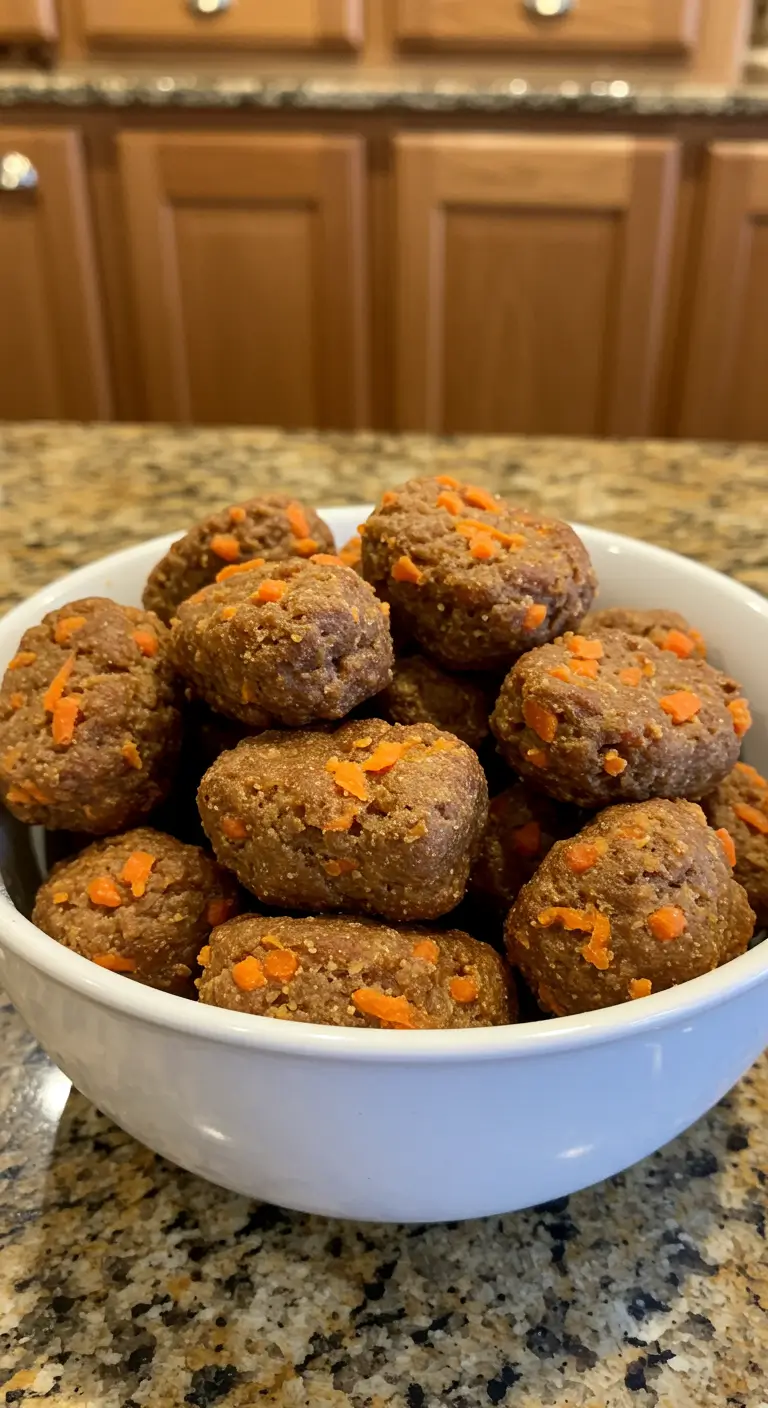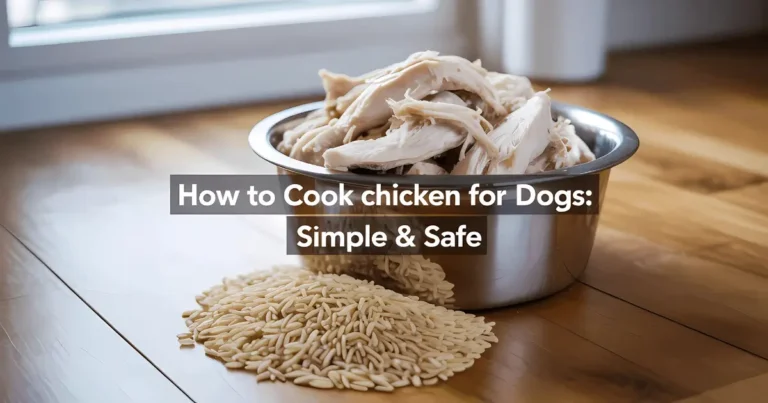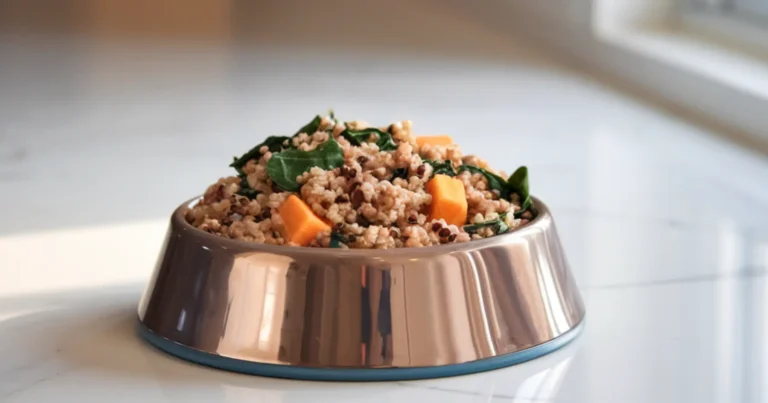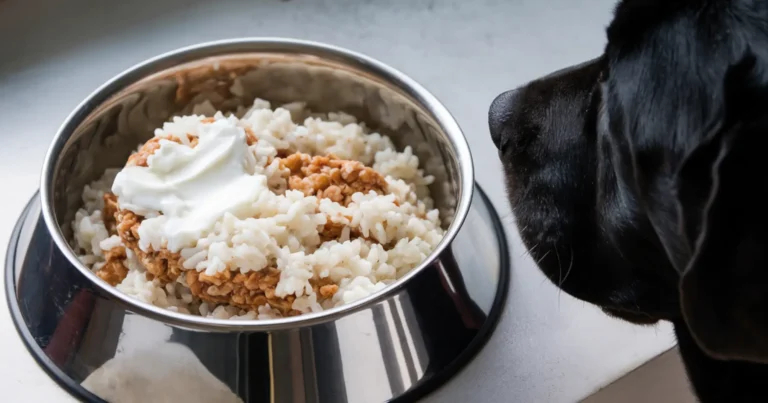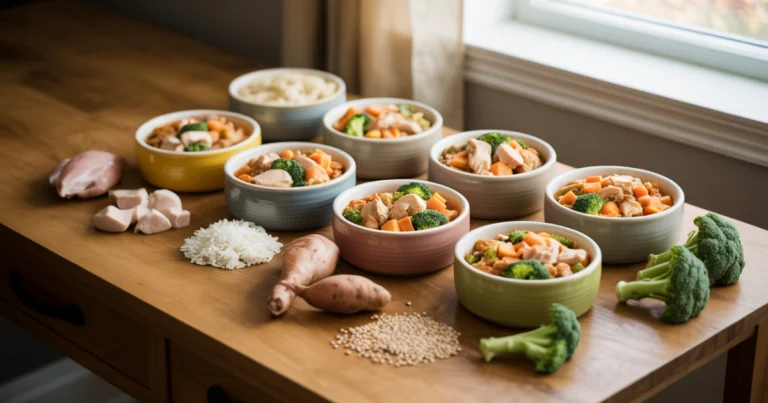Lamb and Rice Dog Food for Sensitive Stomachs: 5 Easy Steps
Hey there, fellow dog parent! So your pup’s been having tummy troubles? I totally feel you on this one. When my rescue baby Benji first came home, his stomach was basically a drama queen – everything seemed to upset it. After trying what felt like every lamb and rice dog food on the market (and trust me, that got expensive fast!), I finally realized the solution was right in my kitchen.
This homemade dog food for sensitive stomachs saved our sanity and Benji’s belly. As part of our homemade dog food recipes for allergies collection, this gentle lamb and rice for dogs recipe has become my go-to whenever digestive issues pop up. Ready to give your pup some serious tummy relief? Let’s do this! 😊
Table of Contents
Why Lamb and Rice Work Like Magic for Sensitive Stomachs
Okay, let’s talk about why this dog food lamb and rice combo is basically the comfort food of the canine world. Ever notice how when you’re feeling sick, you crave simple foods like toast or rice? The same concept applies to our furry babies.
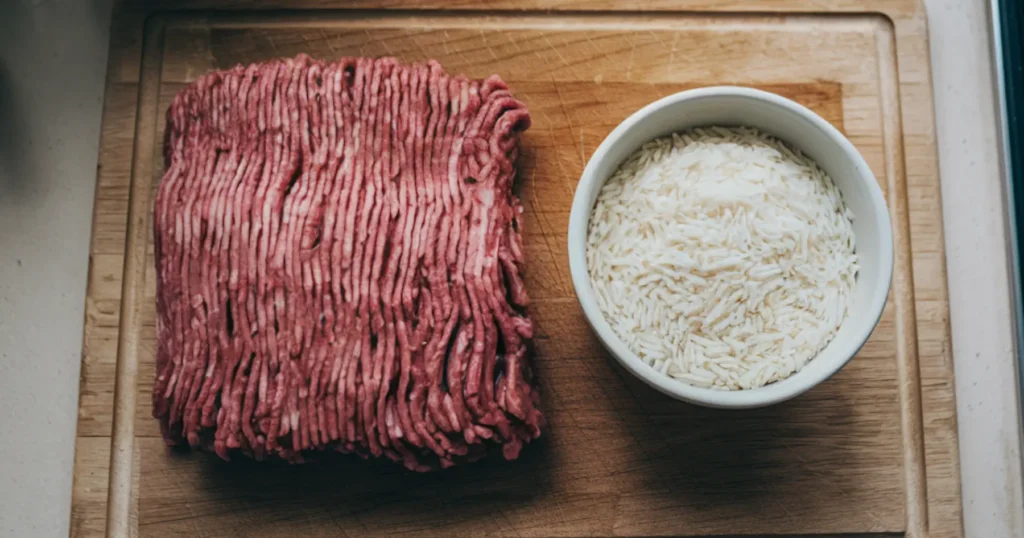
Lamb: The Gentle Giant of Proteins
Here’s the thing about lamb – it’s what we call a “novel protein” for most dogs. Basically, if your pup hasn’t been exposed to it much, their tummy is less likely to throw a tantrum. Unlike chicken or beef, which show up in practically every commercial dog food, lamb flies under the radar.
From my experience with Benji (and trust me, we’ve tried EVERYTHING), lamb and rice for dogs works because lamb is naturally easier to digest than other red meats. It’s got this perfect balance of protein and fat that doesn’t overwhelm sensitive systems. Plus, lamb contains natural anti-inflammatory properties that can actually help heal irritated digestive tracts.
Lamb has incredibly high protein content, roughly 25 grams per 100 grams, and contains all the vital amino acids your puppy needs. When Benji was going through his worst digestive phase, this was literally the only protein that didn’t send him running to the grass at 3 AM, if you know what I mean.
Rice: The Ultimate Stomach Soother
Now, about rice – white rice specifically gets a bad rap sometimes, but hear me out. When your dog’s stomach is doing backflips, white rice is like a gentle hug for their digestive system. It’s bland (in the best way possible), easy to digest, and provides quick energy without causing chaos.
I learned this the hard way during one of Benji’s particularly rough weeks. Our vet basically put him on a rice and boiled chicken diet, and I watched this miracle happen. His system calmed down, his stools firmed up, and he stopped looking at me with those “why did you poison me?” eyes every mealtime.
White rice also helps bind loose stools – something every dog parent with a sensitive pup knows is worth its weight in gold. Plus, it gives this lamb and rice dog food recipe the perfect carbohydrate base without adding any potentially irritating ingredients.
Complete Lamb and Rice Recipe for Sensitive Stomachs
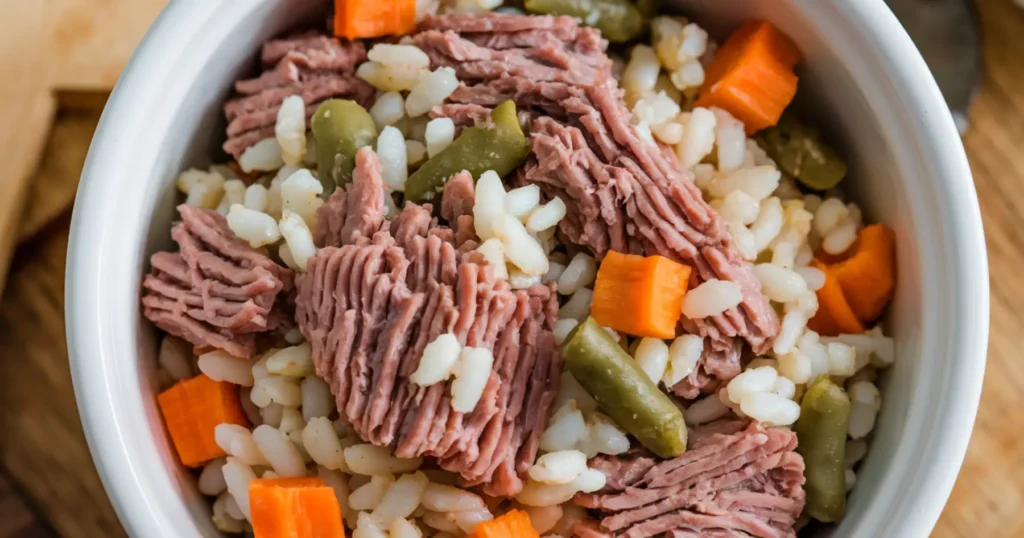
Alright, here’s the star of the show – my tried-and-true homemade dog food for sensitive stomachs recipe that literally saved Benji’s belly (and my carpet!). This lamb and rice dog food is so gentle, even the most sensitive stomachs usually handle it like champs.
Recipe Quick Facts
- Prep Time: 10 minutes
- Cook Time: 35 minutes
- Total Time: 45 minutes
- Yield: 6-8 cups (feeds 40-60 lb dog for 3-4 days)
- Storage: Refrigerate 4 days, freeze 3 months
- Calories: Approximately 55-60 per ounce
Ingredients
| Ingredient | Amount | Why It’s Perfect for Sensitive Tummies |
|---|---|---|
| Ground lamb (85% lean) | 1.5 pounds | Novel protein, anti-inflammatory, easily digestible |
| White rice (long grain) | 1.5 cups dry | Gentle carb, stool-binding, quick energy |
| Carrots (peeled) | 2 medium | Fiber, beta-carotene, natural sweetness |
| Green beans | 1 cup fresh | Digestive healing, flavor, and hydration |
| Bone broth (low sodium) | 1 cup | Digestive healing, flavor, hydration |
Equipment You’ll Need
- Large pot with lid
- Medium saucepan
- Sharp knife and cutting board
- Wooden spoon for stirring
- Measuring cups
- Storage containers with tight lids
Nutritional Information (Per Cup)
- Protein: 14-16 grams
- Fat: 6-8 grams
- Carbohydrates: 12-15 grams
- Fiber: 2-3 grams
- Calories: 440-480
Special Instructions for Sensitive Stomachs
- Always use white rice instead of brown – it’s gentler on upset tummies
- Keep lamb at 85% lean or higher to avoid excess fat that can trigger digestive issues
- Remove all visible fat from the lamb before cooking
- Use only low-sodium bone broth to prevent stomach irritation
- Cook all ingredients thoroughly until very soft for easier digestion
- Let everything cool completely before serving to prevent burns
5 Steps to Prepare This Healing Lamb and Rice Recipe
Trust me, this dog food lamb and rice recipe is so straightforward, you’ll wonder why you didn’t try it sooner. Even when Benji was at his most sensitive, this never failed us.
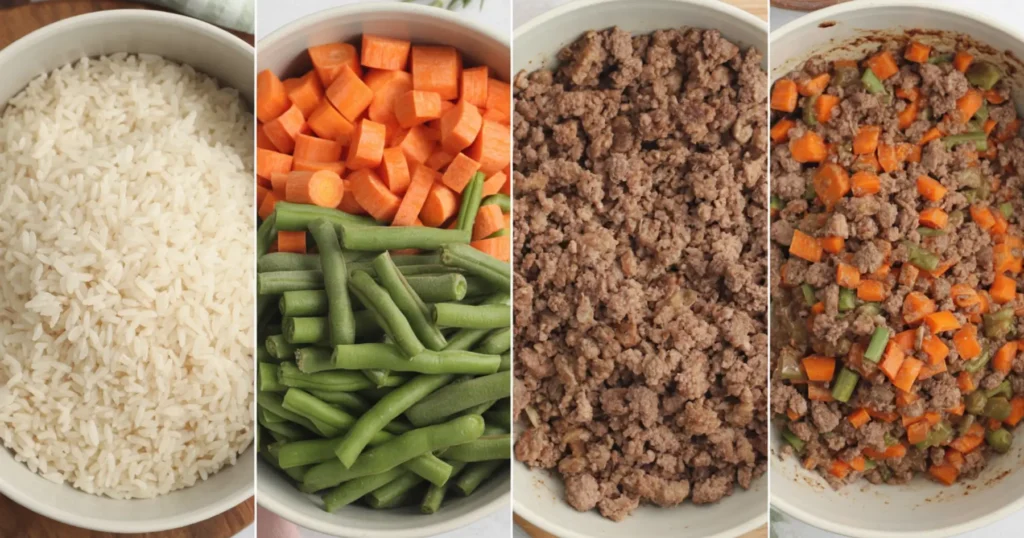
Step 1: Start the Rice Foundation
- Rinse 1.5 cups of white rice under cold water until the water runs clear
- Combine rice with 3 cups of water in a medium saucepan
- After bringing to a boil, quickly lower the heat to low.
- Cover and simmer for 18-20 minutes until rice is very soft
- Remove from heat and let stand 5 minutes covered
- Using a fork, fluff and set aside to cool.
Step 2: Prepare the Vegetables
- Peel carrots and cut into small ¼-inch cubes for easy digestion
- Trim green beans and cut into ½-inch pieces
- Steam vegetables for 8-10 minutes until very tender
- You want them soft enough to mash with a fork
- Drain any excess water and set aside to cool
Step 3: Cook the Ground Lamb Gently
- Heat a large pot over medium-low heat (keep it gentle!)
- Add ground lamb and break apart with a wooden spoon
- Cook slowly for 12-15 minutes, stirring frequently
- Remove any excess fat that accumulates during cooking
- Lamb should reach 160°F internal temperature with no pink remaining
- Meat should be tender and crumbly, not tough
Step 4: Combine Base Ingredients
- Add the steamed vegetables to the cooked lamb
- Stir gently and cook together for 2-3 minutes
- Pour in the low-sodium bone broth gradually
- To blend the flavors, let the mixture simmer for five minutes.
- The broth adds healing properties and makes everything more digestible
Step 5: Final Assembly and Cooling
- Remove the pot from the heat completely
- Gently fold in the cooked rice, mixing thoroughly but carefully
- You want to preserve the rice grains, so don’t overmix.
- Let the entire mixture cool to room temperature before storing
- Divide into meal-sized portions for easy serving
- Always serve at room temperature, never hot or cold from the fridge
Serving Guidelines and Transitioning to Your New Recipe
Getting the portions right with this lamb and rice for dogs recipe is super important, especially when dealing with sensitive stomachs. Too much, too fast = not fun for anyone involved!
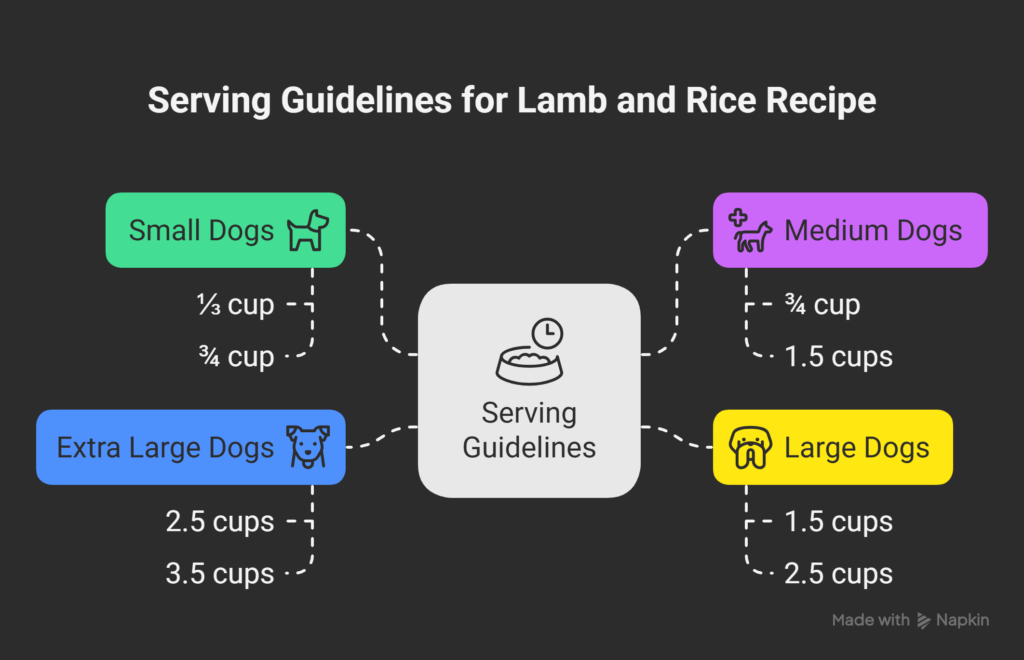
Daily Serving Amounts by Weight
- Small Dogs (10-25 lbs): ⅓ to ¾ cup per day
- Medium Dogs (25-50 lbs): ¾ to 1.5 cups per day
- Large Dogs (50-75 lbs): 1.5 to 2.5 cups per day
- Extra Large Dogs (75+ lbs): 2.5 to 3.5 cups per day
- Split the daily amount into 2-3 smaller meals for better digestion
- Start with smaller portions and increase gradually
- Monitor your pup’s response and adjust as needed
Transitioning Schedule for Sensitive Stomachs
Here’s the thing – when dealing with homemade dog food for sensitive stomachs, slow and steady wins the race. I learned this lesson the hard way with Benji!
- Days 1-3: 25% new food, 75% current food (tiny steps!)
- Days 4-6: 50% new food, 50% current food
- Days 7-9: 75% new food, 25% current food
- Days 10+: 100% new food
- If any digestive upset occurs, go back to the previous ratio
- Some dogs need 2-3 weeks for full transition
- Better to go slower than deal with setbacks
Monitoring Your Dog’s Response to the New Diet
Okay, real talk time. When you’re switching to lamb and rice dog food for digestive issues, you need to become a bit of a detective. Here’s what I learned to watch for during Benji’s recovery.

Signs of Improvement to Watch For
- Firmer, more regular bowel movements (hallelujah!)
- Less frequent bathroom urgencies
- Reduced gas and bloating
- Better appetite and more enthusiasm at mealtime
- Less stomach gurgling and discomfort sounds
- Improved energy levels
- Shinier coat (bonus!)
- Fewer drooling or nausea signs
- More comfortable sleeping positions
Timeline for Improvement
IMO, patience is everything here. With Benji, I started seeing positive changes around day 5, but full improvement took about 3 weeks. Every dog is different, but here’s a general timeline:
- Days 1-3: May still see some digestive adjustment
- Days 4-7: Should notice firmer stools and less urgency
- Week 2: Significant improvement in regularity and comfort
- Weeks 3-4: Full digestive healing and optimal function
Warning Signs to Address
- Worsening diarrhea or blood in stool
- Persistent vomiting for more than 24 hours
- Complete loss of appetite for more than 2 days
- Signs of dehydration (dry gums, lethargy)
- Severe bloating or obvious pain
- Any symptoms that seem to be getting worse instead of better
- Call your vet immediately if any of these occur
Alternative Limited Ingredient Options for Dogs with Sensitive Stomachs
Look, I get it – sometimes even the gentlest lamb and rice for dogs recipe might not be the perfect fit. When Benji was extra sensitive, we had to try a few different approaches.
Other Gentle Protein and Carb Combinations
If lamb doesn’t work out, don’t panic! Some dogs do amazing with duck and potato combinations, Duck is super easy on sensitive systems. Others find relief with salmon and sweet potato recipes that offer those healing omega-3s.
For dogs who can’t handle any red meat, turkey and quinoa options might be your answer. And believe it or not, some pups with the most sensitive stomachs actually thrive on plant-based recipes with carefully selected ingredients.
When to Consider Rotating Proteins
FYI, once your dog’s digestive system stabilizes (usually after 4-6 weeks), you might want to slowly introduce protein rotation. This prevents them from developing new sensitivities and keeps their diet interesting. Just remember – one protein change at a time, and always go slow!
Enhancing Your Dog’s Recovery with Supportive Care
Beyond this homemade dog food for sensitive stomachs, there are some game-changing things you can do to support your pup’s healing journey. Trust me, these little extras made a huge difference for Benji.
Digestive Support and Environment
Keep meal times calm and stress-free, anxiety can totally mess with digestion. Feed smaller, more frequent meals rather than two big ones. Fresh water should always be available, but try not to let them chug huge amounts right before or after eating.
Consider adding a dog-specific probiotic to support gut health during recovery. Just check with your vet first! Also, gentle exercise about 30 minutes after meals can help with digestion, but nothing too intense.
Working with Your Veterinary Team
Regular check-ins with your vet are crucial when dealing with ongoing digestive issues. Keep a food diary noting what you feed, when you feed it, and any symptoms or improvements you notice. This info is gold for your vet!
Don’t hesitate to ask about digestive enzymes or other supplements that might help. Some dogs benefit from temporary medications to heal inflammation while the diet does its work.
Key Takeaways for Success with Lamb and Rice Dog Food
- Lamb and rice dog food offers gentle, easily digestible nutrition for sensitive stomachs
- This dog food lamb and rice combination soothes digestive irritation while providing complete nutrition
- Homemade dog food for sensitive stomachs gives you complete control over ingredients and quality
- Dogs can benefit from lamb and rice since they are both naturally gentle and anti-inflammatory.
- Slow transitions and careful monitoring are essential for success with sensitive pups
- Keep portions smaller and more frequent for better digestive tolerance
- Complete healing may take three to four weeks, but it is well worth the wait.
Conclusion: Healing Your Pup’s Sensitive Stomach Naturally
Creating this lamb and rice dog food recipe has honestly been one of the most rewarding things I’ve done as a dog parent. Watching Benji go from constant digestive distress to actually getting excited about mealtime again? Priceless.
The beauty of homemade dog food for sensitive stomachs is that you know exactly what’s going into your pup’s bowl. No mystery ingredients, no preservatives that might cause issues, just pure, healing nutrition that actually works.
Remember, every dog is different, and what worked amazingly for Benji might need tweaking for your pup. But this lamb and rice for dogs foundation has helped so many sensitive stomachs in our community that I’m confident it’ll be a game-changer for you, too. Here’s to happy bellies and even happier pups! 🙂
FAQs About Lamb and Rice Dog Food for Sensitive Stomachs
How long should I feed this lamb and rice recipe exclusively?
For acute digestive upset, I typically recommend feeding this lamb and rice dog food exclusively for 2-3 weeks minimum. Benji needed about a month before his system was stable enough to handle any additions. Once symptoms completely resolve, you can slowly introduce other ingredients one at a time.
Can I use brown rice instead of white rice for better nutrition?
Honestly? Stick with white rice for sensitive stomachs. I know brown rice has more nutrients, but it’s also higher in fiber and harder to digest. When Benji’s tummy was at its worst, white rice was our lifesaver. If you’d like, you can gradually switch to brown rice after he’s fully recovered.
What should I do if my dog still has loose stools after a week?
Don’t panic, but definitely call your vet. Sometimes it takes longer than expected, or there might be an underlying issue that needs addressing. In the meantime, make sure you’re not giving ANY treats or extras – just the lamb and rice for dogs recipe. Even tiny amounts of other foods can set back progress.
Is this recipe nutritionally complete for long-term feeding?
This homemade dog food for sensitive stomachs is designed as a healing diet, not necessarily a forever diet. For long-term feeding, you’ll need to add supplements and gradually introduce other nutrients. Work with your vet or a canine nutritionist to create a complete, balanced plan once your dog’s digestive issues are resolved.
Can I make larger batches and freeze portions?
Absolutely! I actually prefer making big batches because it’s more convenient. This dog food lamb and rice recipe freezes beautifully for up to 3 months. Just portion it into meal-sized containers and thaw overnight in the fridge before serving. Never microwave or heat it up – room temperature is perfect.
References and Resources
The information in this article is based on my personal experience with Benji and guidance from veterinary professionals. For additional information about canine digestive health and lamb safety for dogs, consult these trusted resources:
American Kennel Club (AKC) – Expert advice on dog nutrition and digestive health management for dogs with sensitive stomachs.
PetMD – Veterinary-reviewed information on canine nutrition, digestive disorders, and safe ingredients for homemade dog food.
Hill’s Pet Nutrition – Research-based guidance on therapeutic nutrition and dietary management for dogs with gastrointestinal sensitivities.
Spot Pet Insurance – Veterinary-approved information about safe foods for dogs and nutritional guidelines for digestive health.
Your Dog Tried It? Drop a Review Below!
There are no reviews yet. Be the first one to write one.


